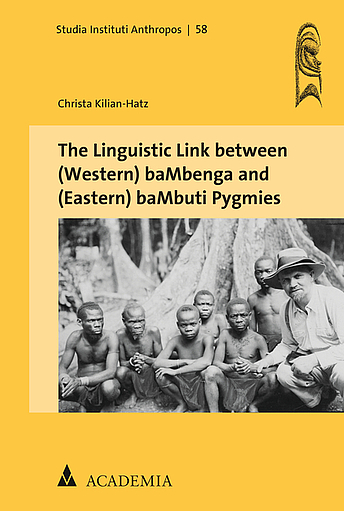englischThe term 'pygmies' long time summarized simply all dwarfish populations of foragers scattered all over the equatorial rainforest of Africa. Missionaries and early ethnologists were fascinated by them because they assumed that the pygmy groups had a common origin and were perhaps direct, almost pure descendants of a very early Stone Age culture. The currently about 20 pygmy forager populations seem to be closely related molecular genetically. However, the pygmy populations speak different languages. An early explanation for this fact assumes that the pygmies are the autochthonous population of the equatorial rain forest and as such spoke once their uniform indigenous 'pygmy' language, a kind of common pygmy proto-language. The present study provides for the first time missing linguistic data of three baMbuti languages: Efe, Atsoa and iButi. The oral literature shows interesting, unexpected parallels suggesting a substratum of a common proto-language.
Molekulargenetische Daten belegen, dass westliche und östliche Pygmäenvölker in Afrika einst eine autochthone einheitliche „Pygmäengruppe“ bildeten. Folglich muss diese auch in einer Art Pygmäen-Protosprache kommuniziert haben. Ihr gemeinsames sprachliches Erbe schien sie jedoch im Lauf ihrer Migrationsgeschichte verloren zu haben. Da die heutigen Pygmäenvölker keine bzw. nur wenig verwandte Sprachen sprechen, bleibt zu klären, ob Reste einer solchen Protosprache existieren; und wenn ja, wird es möglich sein, auch eine solche Pygmäen-Protosprache zu rekonstruieren?
Kürzlich entdeckte lexikalische und grammatikalische Daten der Missionare Brisson, Schebesta und Vorbichler erlauben es erstmals, eine große Anzahl lexikalischer Entsprechungen der westlichen baMbenga-Pygmäen mit den östlichen baMbuti-Pygmäen sowie mit verschiedenen Sprachen zu finden, die nur im östlichen Kongobecken gesprochen werden. Die einzige logische Erklärung dafür ist, dass die westlichen Pygmäen im östlichen Kongobecken gelebt haben müssen, und dass sie zu einem bestimmten Zeitpunkt in ihrer Geschichte einen engeren sprachlichen Kontakt mit den östlichen Pygmäen und deren benachbarten Bantu- und Sudan-Bevölkerungen gehabt haben müssen.


